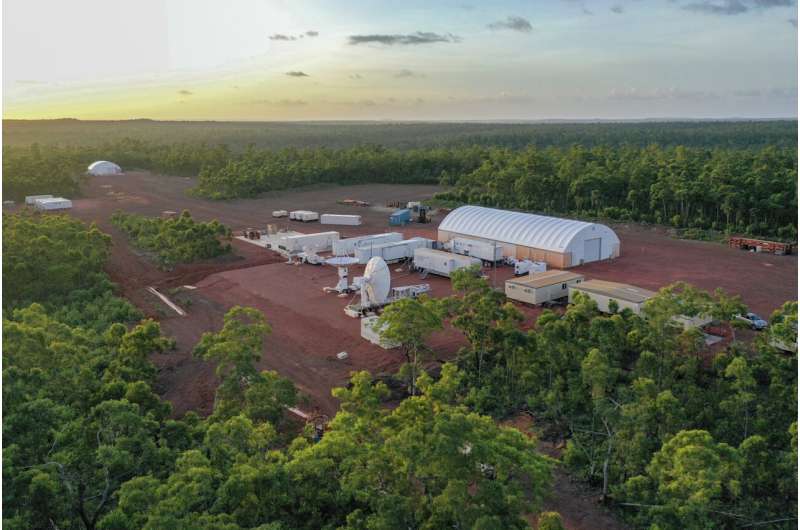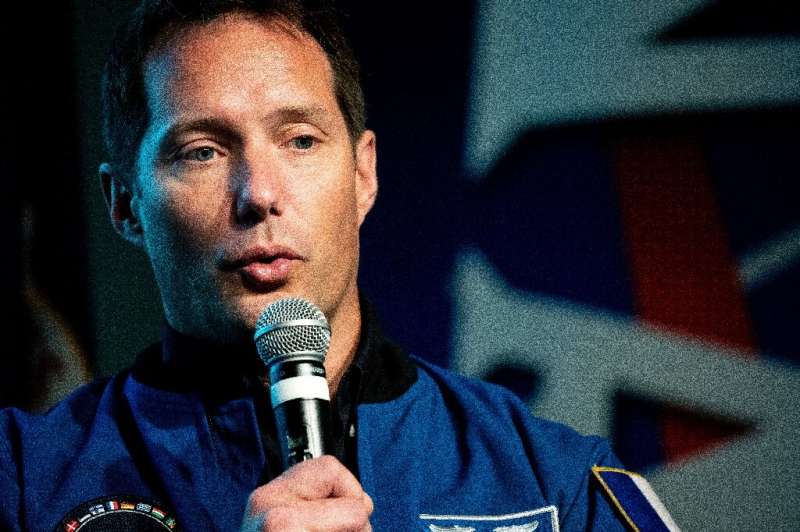
Copernical Team
SmartSat buys EOS Space Systems to advance its CHORUS tactical satellite terminals
 The Adelaide-based SmartSat Co-operative Research Centre has brought in Canberra-based EOS Space Systems to advance its Project CHORUS tactical satellite terminal.
Now a core partner, EOS Space Systems will have priority to select and lead strategic research projects alongside leading universities and global corporations to assist in the development of breakthrough technologies in military
The Adelaide-based SmartSat Co-operative Research Centre has brought in Canberra-based EOS Space Systems to advance its Project CHORUS tactical satellite terminal.
Now a core partner, EOS Space Systems will have priority to select and lead strategic research projects alongside leading universities and global corporations to assist in the development of breakthrough technologies in military Servicing support for Airmen assigned to Space Force fully operational
 The Air Force Materiel Command reached Full Operational Capability for its servicing major command support to Space Force-assigned Airmen, June 1, 2022.
As the servicing MAJCOM, AFMC is accomplishing the roles and responsibilities traditionally performed by a major command for the Airmen supporting the Space Force. These major command functions include, but are not limited to, providing po
The Air Force Materiel Command reached Full Operational Capability for its servicing major command support to Space Force-assigned Airmen, June 1, 2022.
As the servicing MAJCOM, AFMC is accomplishing the roles and responsibilities traditionally performed by a major command for the Airmen supporting the Space Force. These major command functions include, but are not limited to, providing po Maine looks to grow space economy, for students, research and business
 Maine leaders have long been searching for ways to keep more of high school and college graduates from leaving the state. But lobstering and forestry, two stalwarts of the Maine economy, aren't what they used to be.
Enter the new space economy.
"There's something sexy about space," Terry Shehata, executive director of the Maine Space Grant Consortium, a NASA-funded nonprofit, tol
Maine leaders have long been searching for ways to keep more of high school and college graduates from leaving the state. But lobstering and forestry, two stalwarts of the Maine economy, aren't what they used to be.
Enter the new space economy.
"There's something sexy about space," Terry Shehata, executive director of the Maine Space Grant Consortium, a NASA-funded nonprofit, tol NASA to launch 3 rockets from private Australian space port

NASA will launch a research rocket from remote northern Australia this month in the agency's first blast off from a commercial space port outside the United States.
Three suborbital sounding rockets will be launched from the Arnhem Space Center on Indigenous-owned land near the mining town of Nhulunbuy in the Northern Territory on June 26, July 4 and 12, said NASA and the launch pad's owner, Equatorial Launch Australia.
Tailor-made composites for tougher space structures

An ESA-led project constructed a test cylinder using a novel method of laying down carbon fibre, then tested it to buckling point within a crushing machine that subjected it to the equivalent of 10 tons of force. The cylinder met its predicted specifications perfectly, outperforming a traditionally-made equivalent using the same constituent materials. The company involved, iCOMAT in the UK, has now been shortlisted for the 2022 JEC World Composites Innovation Award – recognised as one of the year’s global top three main innovations in the field of aerospace composites.
Space-enabled 5G links Japan and Europe

Engineers have connected Japan and Europe via space-enabled next-generation 5G telecommunication links. It is the first time that such an intercontinental connection has been established between Europe and Japan.
Mars sleeps with one eye open

This scarred and colourful (by martian standards!) landscape shows part of Aonia Terra, an upland region in the southern highlands of Mars. The image was taken by ESA’s Mars Express on 25 April 2022.
NASA Artemis I moon rocket rolls back to Kennedy Space Center launch pad

NASA has sent the Artemis I rocket back to the launch pad at Kennedy Space Center for testing later this month, looking to get back on track for a potential moon launch as early as August.
The 5.75 million-pound, 322-foot-tall combination of the Space Launch System, Orion capsule and mobile launcher left the Vehicle Assembly Building at Kennedy Space Center early Monday to make the 4.4-mile slow crawl to Launch Pad 39-B.
The rocket still needs to run through a complete wet dress rehearsal during which NASA will fill and drain the core and upper stage with 730,000 gallons of super-cooled liquid hydrogen and liquid oxygen while also simulating a countdown but without lighting the engines.
It first rolled out to the launch pad back in March, but several issues scrubbed three test run attempts forcing the rocket back to the VAB, but now mission managers hope their headaches are behind them.
"I think we've got a pretty good plan in place. We'll see how it turns out as we get into our next attempt, but I certainly think we've learned a lot and figured out a lot of specific things and how you want to do this dance," said Tom Whitmeyer, NASA's deputy associate administrator for common exploration systems development.
French astronaut Pesquet calls for European space independence

French astronaut Thomas Pesquet on Tuesday urged Europe to seize the momentum created by its newfound diplomatic unity and "start moving now" to develop its own human spaceflight capacity.
The charismatic engineer and pilot, 44, recently completed his second deployment to the International Space Station on the NASA-SpaceX Crew-2 mission, and has arguably the highest profile among the European Astronaut Corps, in addition to being a celebrity in his native France.
Though he has long extolled international cooperation in space and remains in the mix to possibly go to the Moon as part of the NASA-led Artemis missions, Pesquet said it was vital for Europe's leaders to give the European Space Agency (ESA) the funding and mandate it needs to launch its own people, too.
NASA's Europa Clipper Mission completes main body of the spacecraft

The main body of NASA's Europa Clipper spacecraft has been delivered to the agency's Jet Propulsion Laboratory in Southern California. Over the next two years there, engineers and technicians will finish assembling the craft by hand before testing it to make sure it can withstand the journey to Jupiter's icy moon Europa.
The spacecraft body is the mission's workhorse.

